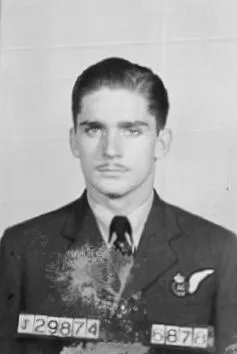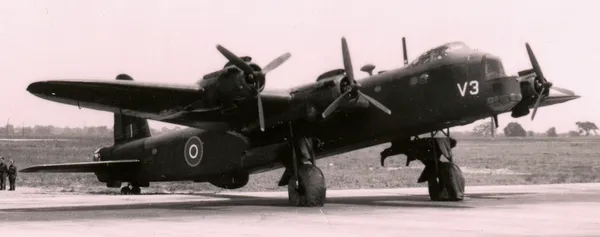Thomas, John Russell (Flying Officer)
Killed in Action 1944-September-21


Birth Date: 1921-March-08
Born: Amherstburg, Essex County, Ontario, Canada
Parents: Son of Harold and Mary Sullivan Thomas of St Amherstburg Ontario
Spouse:
Home: Amherstburg, Ontario
Enlistment:
Enlistment Date: unkown date
Service
RCAF
Unit
620 (B) Sqn- Squadron (RAF)
Base
RAF Fairford
Rank
Flying Officer
Position
Air Gunner (Rear)
Service Numbers
J/29874
Crew or Other Personnel
Stirling LJ830
Mission
Stirling Mk. lV LJ830
Transport 1944-September-21 to 1944-September-21
620 (B) Sqn (RAF) RAF Fairford
Market Garden
620 Squadron (Dona ferentes adsumus) RAF Fairford. Stirling IV aircraft LJ 830 went down near Arnhem, Holland while on a re-supply flight during Operation Market Garden. The Stirling crashed at Buunderkamp, Wolfheze, Gelderland, Netherlands, cause of loss unknown
Flying Officer JR Thomas (RCAF) and passenger SL Churchyard (RASC) were killed in action
There may have been a second unidentified RASC (Royal Army Service Corps) also killed in action on Wellington LJ 830
Flight Lieutenant H Bate (RCAF) and Flying Officer HM MacLeod (RCAF) both survived to be taken as Prisoners of War
Flying Officer R Newton (RCAF), Warrant Officer CC King (RAFVR) and Sergeant T Haig (RAFVR) survived, avoiding capture as Evaders
Stirling serial: LJ830

In June 1944, this Short S.29 Stirling B Mk. IV (Serial No. LK589), coded V3, RAF, was flown across the Atlantic as part of a navigation training exercise and did a tour of bases in Eastern Canada. It is shown here at Malton, Ontario. It was flown back to the UK after a two-week visit.
The Short Stirling was a British four-engined heavy bomber of the Second World War. It has the distinction of being the first four-engined bomber to be introduced into service with the Royal Air Force (RAF).
The Stirling was designed during the late 1930s by Short Brothers to conform with the requirements laid out in Air Ministry Specification B.12/36. Prior to this, the RAF had been primarily interested in developing increasingly capable twin-engined bombers but had been persuaded to investigate a prospective four-engined bomber as a result of promising foreign developments in the field. Out of the submissions made to the specification Supermarine proposed the Type 317, which was viewed as the favourite, whereas Short's submission, named the S.29, was selected as an alternative. When the preferred Type 317 had to be abandoned, the S.29, which later received the name Stirling, proceeded to production. In early 1941 the Stirling entered squadron service. During its use as a bomber pilots praised the type for its ability to out-turn enemy night fighters and its favourable handling characteristics whereas the altitude ceiling was often a subject of criticism. The Stirling had a relatively brief operational career as a bomber before being relegated to second line duties from late 1943. This was due to the increasing availability of the more capable Handley Page Halifax and Avro Lancaster, which took over the strategic bombing of Germany. Decisions by the Air Ministry on certain performance requirements (most significantly to restrict the wingspan of the aircraft to 100 feet) had played a role in limiting the Stirling's performance; the 100ft limit also affected earlier models of the Halifax (MkI & MkII) though the Lancaster never adhered to it.
During its later service, the Stirling was used for mining German ports; new and converted aircraft also flew as glider tugs and supply aircraft during the Allied invasion of Europe during 1944"“1945. In the aftermath of the Second World War, the type was rapidly withdrawn from RAF service, having been replaced in the transport role by the Avro York, a derivative of the Lancaster that had previously displaced it from the bomber role. A handful of ex-military Stirlings were rebuilt for the civil market. Wikipedia

